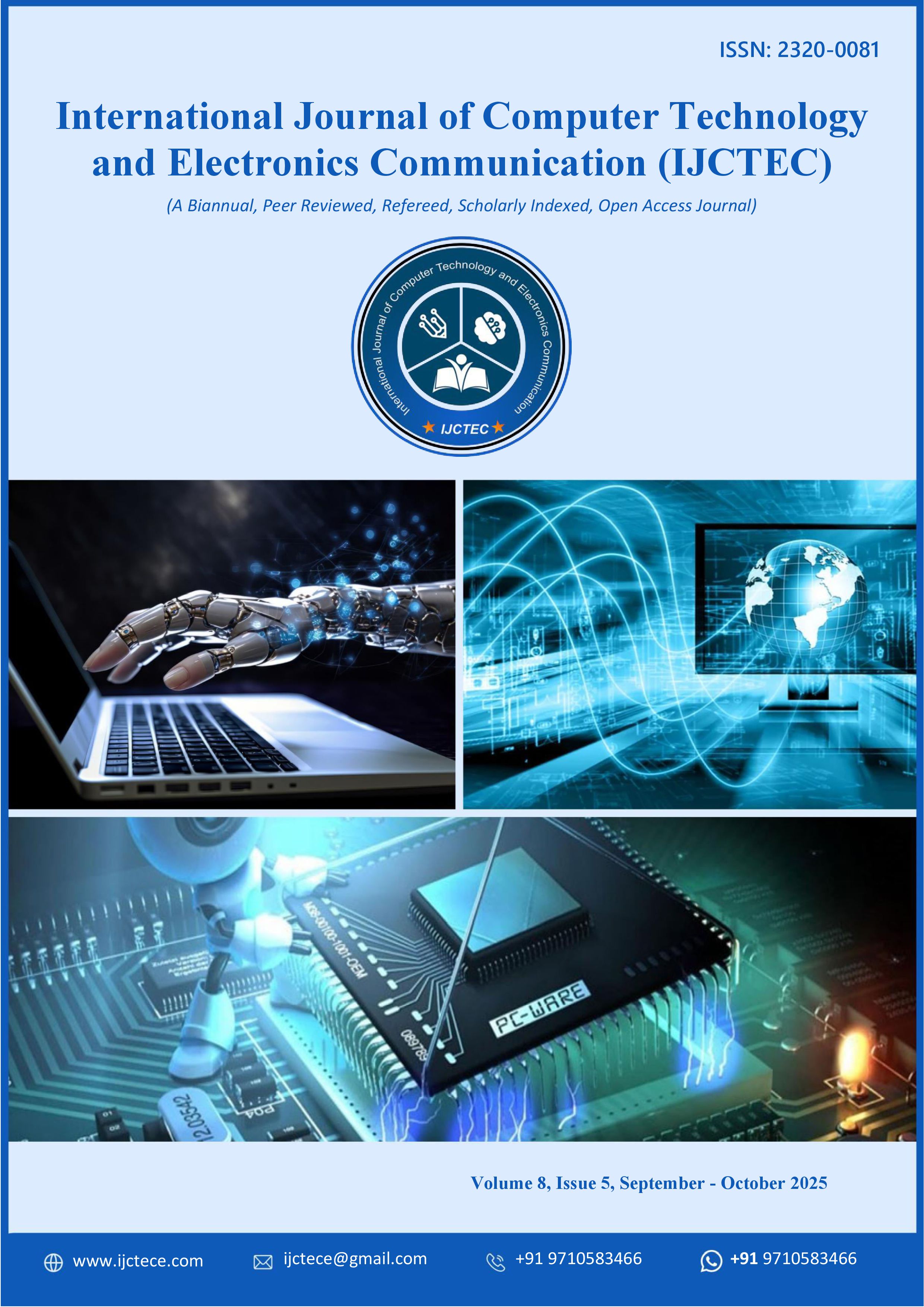RAG vs. Fine-Tuning vs. Prompt Engineering: A Comparative Analysis for Optimizing AI Models
DOI:
https://doi.org/10.15680/IJCTECE.2025.0805004Keywords:
Large Language Models, Retrieval Augmented Generation, Fine-Tuning, Prompt Engineering, AI Optimization, Natural Language Processing, Vector Databases, Machine Learning, Healthcare AI, Finance AI, Dialog SystemsAbstract
The advent of Large Language Models (LLMs) has revolutionized Artificial Intelligence capabilities, enabling complex natural language understanding and generation tasks. However, deploying these powerful, general-purpose models effectively for specific domain-centric applications requires tailored optimization strategies. This paper presents a comparative analysis of three prominent techniques: Prompt Engineering, Fine-Tuning, and Retrieval-Augmented Generation (RAG). We delve into the mechanisms, practical implementations, strengths, and limitations of each approach. Utilizing real-world examples from industries like healthcare and finance, we illustrate how these methodologies address domain adaptation, knowledge integration, and performance enhancement. The analysis provides insights for practitioners navigating the landscape of LLM optimization and serves as a valuable guide for organizations seeking to transition from rigid, rule-based systems like dialog trees to more flexible, knowledge-aware LLM frameworks. Keywords are provided to facilitate indexing and search within the technical literature.
References
[1] Rawal, A., McCoy, J., Rawat, D.B., Sadler, B.M. and Amant, R.S., 2021. Recent advances in trustworthy explainable artificial intelligence: Status, challenges, and perspectives. IEEE Transactions on Artificial Intelligence, 3(6), pp.852-866.
[2] Pradhan, Rashmiranjan, and Geeta Tomar. "AN ANALYSIS OF SMART HEALTHCARE MANAGEMENT USING ARTIFICIAL INTELLIGENCE AND INTERNET OF THINGS.". Volume 54, Issue 5, 2022 (ISSN: 0367-6234). Article history: Received 19 November 2022, Revised 08 December 2022, Accepted 22 December 2022. Harbin Gongye Daxue Xuebao/Journal of Harbin Institute of Technology.
[3] Pradhan, Rashmiranjan. “AI Guardian- Security, Observability & Risk in Multi-Agent Systems.” International Journal of Innovative Research in Computer and Communication Engineering, 2025. doi:10.15680/IJIRCCE.2025.1305043.
[4] Pradhan, Dr. Rashmiranjan. “Establishing Comprehensive Guardrails for Digital Virtual Agents: A Holistic Framework for Contextual Understanding, Response Quality, Adaptability, and Secure Engagement.” International Journal of Innovative Research in Computer and Communication Engineering, 2025. doi:10.15680/IJIRCCE.2025.1307013.
[5] Pradhan, D. R. (no date) “RAGEvalX: An Extended Framework for Measuring Core Accuracy, Context Integrity, Robustness, and Practical Statistics in RAG Pipelines,” International Journal of Computer Technology and Electronics Communication (IJCTEC. doi: 10.15680/IJCTECE.2025.0805001.
[6] Rashmiranjan, Pradhan Dr. "Empirical analysis of agentic ai design patterns in real-world applications." (2025).
[7] Pradhan, Rashmiranjan, and Geeta Tomar. "IOT BASED HEALTHCARE MODEL USING ARTIFICIAL INTELLIGENT ALGORITHM FOR PATIENT CARE." NeuroQuantology 20.11 (2022): 8699-8709.
[8] Rashmiranjan, Pradhan. "Contextual Transparency: A Framework for Reporting AI, Genai, and Agentic System Deployments across Industries." (2025).
[9] Vaswani, A., Shazeer, N., Parmar, N., Uszkoreit, J., Jones, L., Gomez, A. N., ... & Polosukhin, I. (2017). Attention Is All You Need. Neural Information Processing Systems (NIPS).
[10] Devlin, J., Chang, M. W., Lee, K., & Toutanova, K. (2018). BERT: Pre-training of Deep Bidirectional Transformers for Language Understanding. arXiv preprint arXiv:1810.04805.
[11] Lewis, P., Yih, W. T., Pihur, V., Lewis, K., Simig, D., Koren, N., ... & Riedel, S. (2020). Retrieval-Augmented Generation for Knowledge-Intensive NLP Tasks. Advances in Neural Information Processing Systems (NeurIPS).
[12] Brown, T. B., Mann, B., Ryder, N., Subbiah, M., Kaplan, J., Dhariwal, P., ... & Amodei, D. (2020). Language Models are Few-Shot Learners. Advances in Neural Information Processing Systems (NeurIPS).
[13] Mosbah, S., & Driss, M. (2024). Comparative Analysis of RAG Fine-Tuning and Prompt Engineering in Chatbot Development. Available via platforms that index research, potentially including IEEE.
[14] Gao, Y., Ma, X., Zhou, J., Yan, Y., Zhang, J., Liu, S., ... & Li, H. (2024). Retrieval-Augmented Generation for Large Language Models: A Survey. arXiv preprint arXiv:2312.10997.
[15] Lester, B., Al-Rfou, R., & Constant, N. (2021). The Power of Scale for Parameter-Efficient Fine-Tuning. arXiv preprint arXiv:2103.10385.
[16] Hu, E. J., Shen, Y., Wallis, P., Allen-Zhu, Z., Li, Y., Wang, S., ... & Chen, W. (2021). LoRA: Low-Rank Adaptation of Large Language Models. arXiv preprint arXiv:2106.09685.
[17] Kirchhoff, K., & Kordoni, A. (Eds.). (2017). Proceedings of the 2017 IEEE International Conference on Acoustics, Speech and Signal Processing (ICASSP). IEEE.


